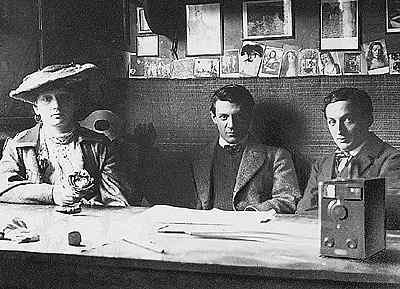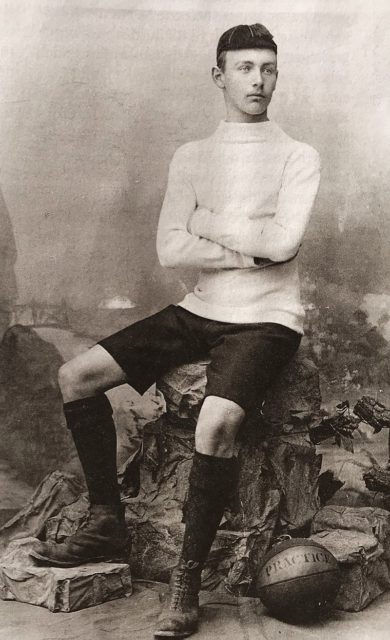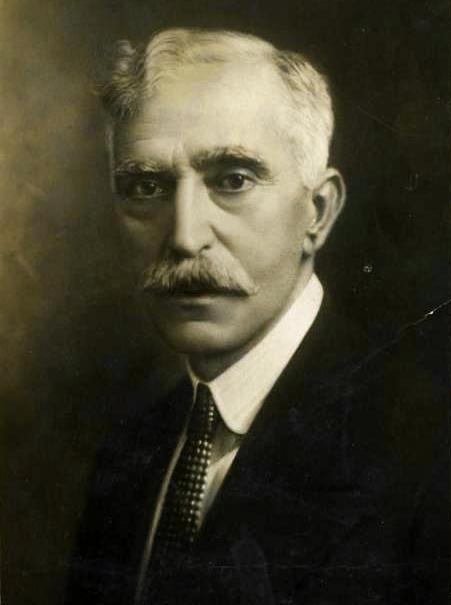Maturity
Being used to the political turmoil and fueled by the better overall conditions due to the industrial revolution and the opening of the port, Barcelona’s economy enters the industrial age before the rest of Spain despite the political unrest.
In 1835 the Bonaplata factory in Barcelona becomes the first industrial factory in Spain with more than 700 workers. From 1841 to 1857, the city of Barcelona monopolizes industrial cotton & textile production in Spain. In 1848 Antoni Gaudí‘s future patrons, the Güell family opened El Vapor Vell in Sants just outside Barcelona.
In 1854 the city finally decides to put down its arms and make way for the future. In a project that would last until 1873, the defensive walls are gradually razed to the ground to make way for the big expansion.


The plans for the new wide-laned district of Eixample (literally “the extension”) are given the go-ahead. The priorities are a modern expansive layout that would assure improved hygiene and connect Barcelona with all its satellite towns of Gràcia, Sant Gervasi, Sant Martí, etc.
With the plain of Barcelona filling up with factories & chimneys, the city gained a reputation as a Manchester of the Mediterranean. New wealth led to a kind of 19th-century Renaissance, which celebrated civic and economic growth through culture and art.
The revival of the Jocs Florals poetry competitions celebrated the individuality of the Catalan language. At the same time, the novel modernist movement had Antoni Gaudi as one of its pioneers and leading figures. Finally the Great Exposition of Barcelona of 1888 which drew over 2 million visitors & removed all traces of the hated fortress of Ciutadella, altogether gave Barcelona a new air of optimism. An aura of an important European metropolis.



Gaudi graduated from the Barcelona Higher School of Architecture in 1878. At that same year at the Paris World Fair, his modernist work for a display stand of a participating glove manufacturer from Barcelona at the Spanish pavilion would impress Eusebi Güell a Catalan owner of a textile factory who saw in the young architect and fellow countryman the ingenuity needed for his legacy to become immortal. Güell had the money and Gaudi the extraordinary talent. Both men had the ambition to stand out and a vision that would coincide in a lot of ways.
With the first two projects commissioned to Gaudi by Güell, the Finca Güell, and Palau Güel a bit later Park Güell under construction, the young architect is given the work of a new church in Eixample in 1883. The monumental Basílica I Temple Expiatori de la Sagrada Família would make Gaudi renowned all over the globe not just as one of the most iconic architects of the modernist movement but as one of the greatest architects of all time.
The project of the Sagrada Familia is still ongoing and is expected to be finished in the year 2026 a year that marks the centenary year of the death of Gaudí, 147 years after the beginning of the construction. Gaudi would reach an apogee with the construction of the astounding Casa Batlló (Batlló house) and the Casa Milà (Milá house also known as La Pedrera), both of which stand out today as two of the main tourist attractions in Barcelona along with the rest of his creations.



It wasn’t just the Eixample that had been turned into a giant working site. Contrary to the popular belief, the Gothic quarter (Barri Gòtic) acquired a large part of its current form during the last years of the 19th and first years of the 20th century.
From the facade of Barcelona Cathedral to Pont del Bisbe and Aguilar Palace (Museu Picasso today), the whole district of the old town was revamped in the neo-Gothic architectural style for the Catalan capital to be beautified on time for the 1929 International Exhibition of Barcelona.



In that golden age of the city, Gaudi was not the only one who would become immortal through his brilliant work. A young Andalusian son of a painter and professor of art had moved to Barcelona in 1895 from La Coruna. The fourteen-year-old had already exhibited talent in his father’s profession.
Despite the young of his age he had already been accepted into La Coruna’s School of Fine Arts and had already exhibited his first oil paintings. In Barcelona, he would thrive. He was transferred to La Llotja School of Fine Arts (Reial Acadèmia Catalana de Belles Arts de Sant Jordi today) for about 2 years.
In 1900 Pablo Picasso presented his first solo exhibition at the artistic Els Quatre Gats café. Picasso would spend his life between Paris and Barcelona before leaving the latter for the former in 1905 for good. The city however would never actually leave his art. Thousands of drawings have been created with Barcelona acting as his muse. His so-called Blue Period is a collection of works inspired by the city. He would forever refer to Barcelona as his home.



In many ways, almost all the things that the modern world identifies as Barcelona today were created during that period. In 1899 a Swiss sports enthusiast from Zurich named Joan Gamper takes a visit to his uncle in Barcelona on his way to Africa for business. Joan had been into all sports in his home city but in football (soccer) he had already some experience especially in the field of the creation of new teams, after co-founding FC Zürich in 1896.
Joan fell in love with Barcelona and never did go on his journey to Africa. He stayed in Barcelona and began working in the French bank Crédit Lyonnais. By the end of that year, he had placed an ad in the sports magazine Los Deportes he had helped create.
In 1900 FC Barcelona played its first match with the characteristic red and blue shirts, the Blaugrana against the team of Hispania. The team would be forever linked with Catalan fervor for independence, a source of pride and fame for the city up to this day.



At the same time, the flow of exceptionally talented artists who lived and thrived in the city kept growing. Joan Miró was born in Barcelona in 1893. He studied at the Cercle Artístic de Sant Lluc of Barcelona and had his first exhibition in 1918 at the Galeries Dalmau of Barcelona. Salvador Dalí was born in Figueres of Catalonia in 1904.
He also exhibited his first solo exhibition in 1924 at the Galeries Dalmau, a gallery that was already renowned all over Europe as the flagship venue of modern art in Spain. Dali would hold two more exhibitions in the gallery in 1926 and 1927, a year when another larger-than-life figure of the time with strong friendship ties (according to some erotic) with Dali, the writer Federico García Lorca also exhibited his drawings in the same gallery.



With Barcelona booming economically, culturally, and in terms of population (from 533,000 in 1900 to 710,000 in 1920, to 1 million in 1930), several nationalist, socialist, communist & anarchist movements manifested themselves in various and some extreme ways, through riots that often led to deaths. The situation was so intense that in the 1920s Barcelona became known in Europe as “Anarchism’s rose of fire”.


In April 1931 a new revolution led to the Second Spanish Republic after the forced abdication of King Alfonso XIII. The liberal constitutionalists were quickly pushed aside by the socialists who adopted the separation of state & church and grabbed on the chance given to them by the radical liberal constitution that had just been voted in Madrid for an autonomous rule of Cataluña, a chance that was also picked up by the Basques and the Galicians.
Francesc Macià, leader of the Republican Left of Catalonia (ERC) was declared President of the Catalan Republic. A few days later Macià agreed with the Republican government in Madrid to change the name of the autonomous region to Generalitat of Catalonia, an autonomous government inside the umbrella of the Spanish Republic.



The radical, for its time, nature of these reforms, fostered the growth of the conservative Falange party (Falange Española) modeled after Germany’s & Italy’s fascist parties. By the time of the 1936 elections, the country was split politically with Catalonia firmly to the left.
The attempt by the Spanish Army & General Francisco Franco who were also supported by Mussolini & Hitler to seize power ignited the Spanish Civil War that would ravage the whole country. Barcelona & the Catalan coast were bombed by German & Italian fighter planes, numerous citizens were executed and thousands more were imprisoned or fled into France.



Franco’s forces occupied Barcelona in the first months of 1939, the President of the Catalan Government Lluís Companys was exiled to France where he was captured by the Nazis and handed over to General Franco who had him executed in 1940. The Catalan language & culture were once again forced to go underground.
Franco and his ministers would face Catalan nationality as “an illness” that had to be uprooted. Censorship, secret police, arrests, and mock trials became a reality Catalonians had to live with long after the end of WW2. Franco’s dictatorship lasted until he died in 1975.


Right before he died in 1975, at the age of 82, Franco restored the monarchy, giving full power to Juan Carlos I of Spain. On October 23, 1977, amid an impressive popular reception, the last president of the Generalitat Josep Tarradellas (elected by other exiles in Mexico City in 1954), would proclaim to the cheering crowd from the balcony of the Palau de la Generalitat “Ciutadans de Catalunya, ja sóc aquí!” (Catalan for “Citizens of Catalonia, I am here at last!”).
Quickly after the restoration of democracy, the Catalans restored their native language and their cultural freedom through the Generalitat, which was once more the governing body of an autonomous region (1979). Traditional festivals were reintroduced and interest in Catalonian literature and history exploded with new editions and reprints every year.
The Institut de Estudis Catalans were reestablished and became the guardian of the Catalan language. The Grec Festival was inaugurated giving the Teatre Grec of Montjuïc a new life with local artists and productions, world-famous writers, directors, and performers like Dario Fo and Michel Piccoli honoring the city with their performances.


In 1992 the city became the host of the Summer Olympics. The global event became a launch pad used by the city mayor Pasqual Maragall, to reorganize the city districts and beautify some of its unattractive parts. Twelve important projects were linked to the Olympic infrastructure and led to a clear improvement in four of the city’s neighborhoods.
The opening up to the sea, The Barcelona Museum of Contemporary Art (MACBA), Glòries square, Port Vell and Maremágnum were among them. In 2003, after 20 years at the helm of the Generalitat, the conservatives lost to the Socialists led by Pasqual Maragall, mayor of Barcelona during the Olympic years.




These days Barcelona is a bustling metropolis of more than 1,600,000 people and a population of the wider urban area of around 4,800,000. It is one of the most culturally diverse cities in Europe with more than 20% of its population being born outside of Spain. Italians are the largest ethnic group of migrants, with the French and Latin Americans following suit. It has gained a place among the top five cities in Europe based on its GDP.
In 2018 the number of tourists that visited the city touched a staggering number of 20 million people. The steep increase in the number of tourists has caused a reaction by several Barceloneses expressing their discontent with the rising rents and the overall impacts of over-tourism.
The city is the capital of both the province of Barcelona and the autonomous community of Catalonia. Its soccer team F.C Barcelona is considered one of the most if not the most iconic and popular football teams in the whole world. A great rival of Real Madrid, a rivalry that identifies with the majority’s support for Catalonian independence.
It is a city of sixty municipal parks with green covering an area of more than 10% of the city’s surface. A city brand among the top in the world. To paraphrase the motto of its popular soccer team, Barcelona és més que un Ciutat.






